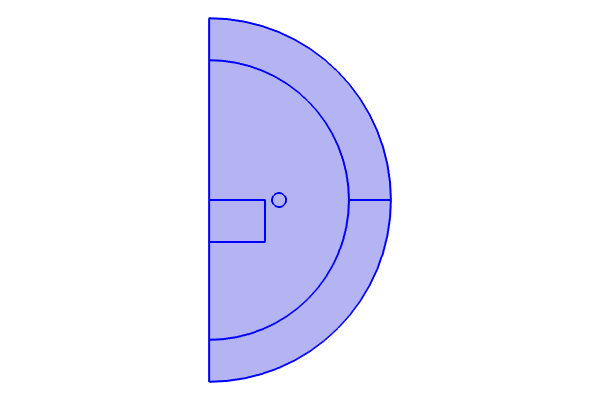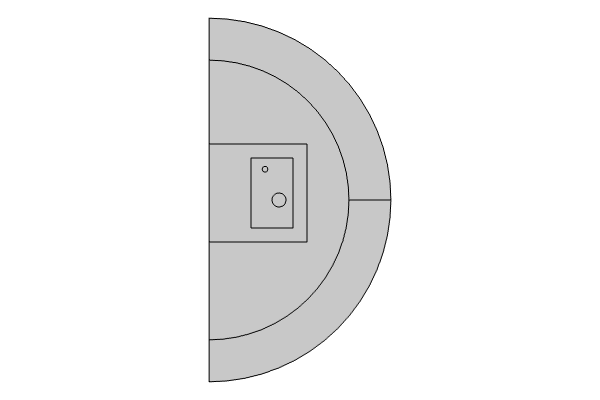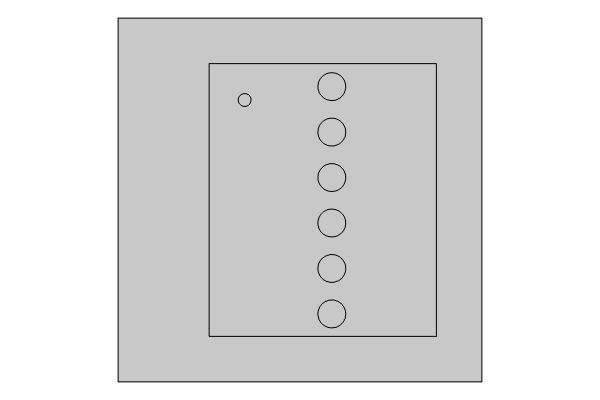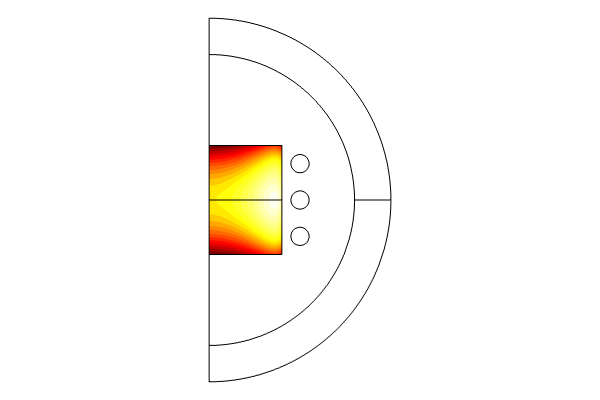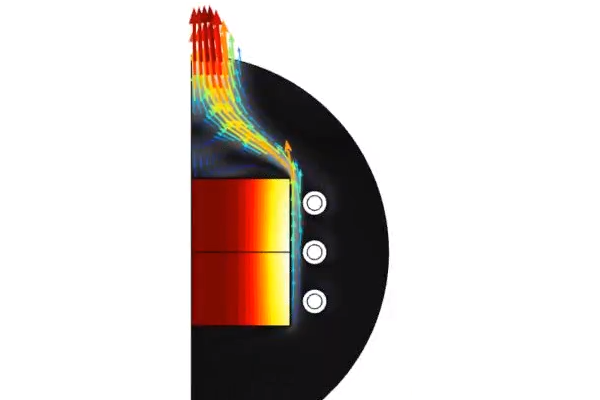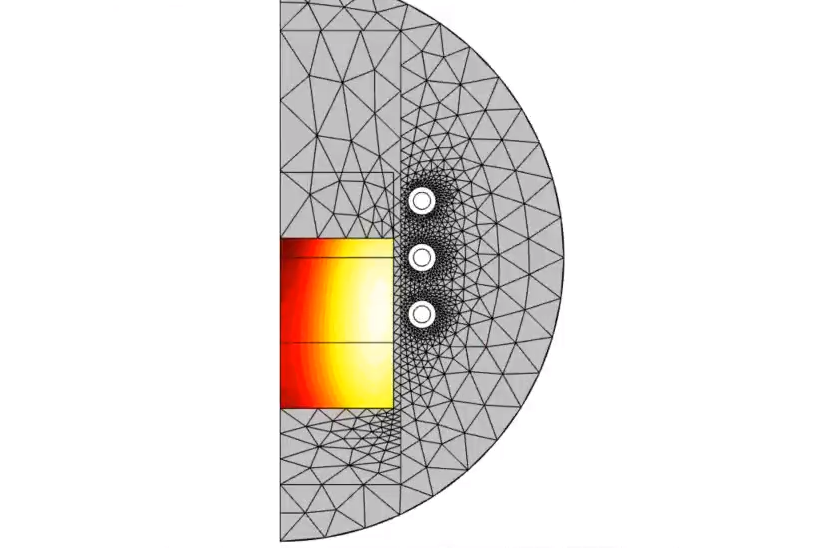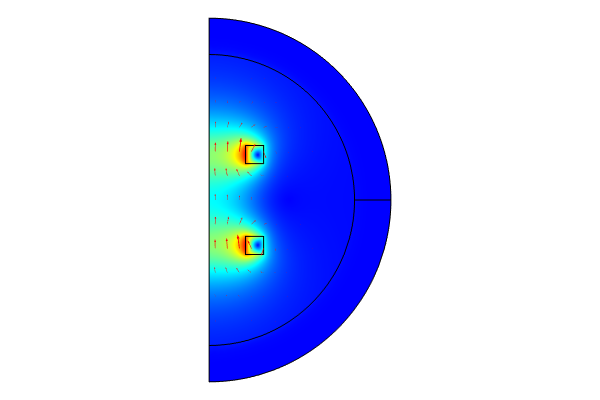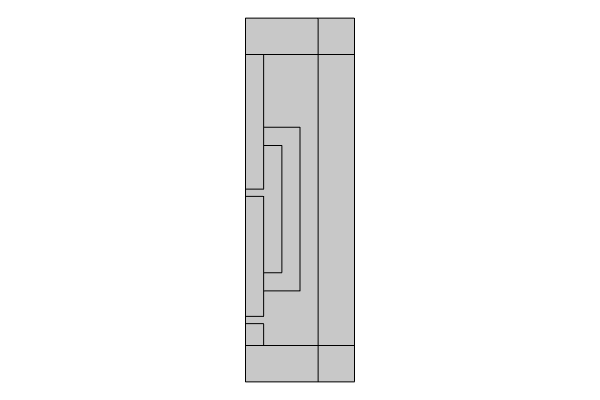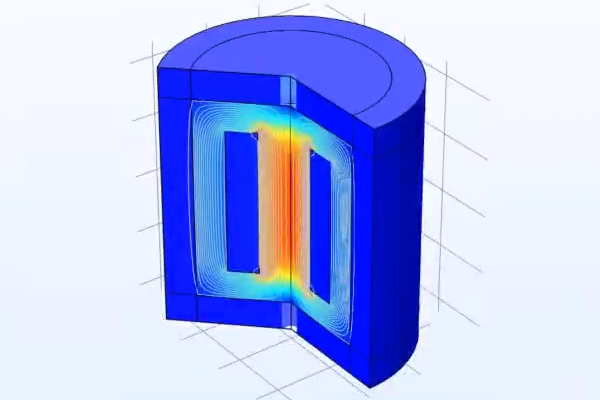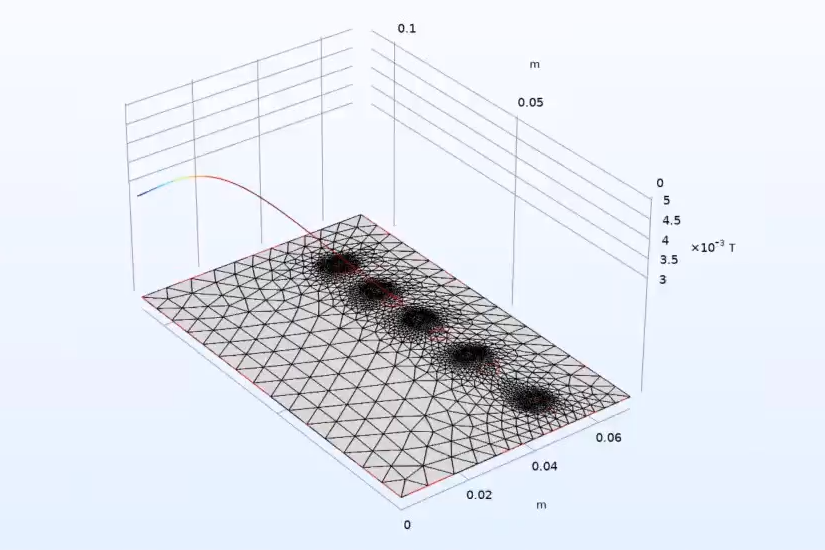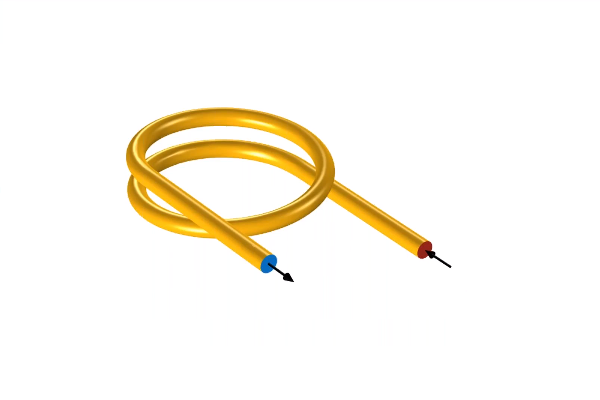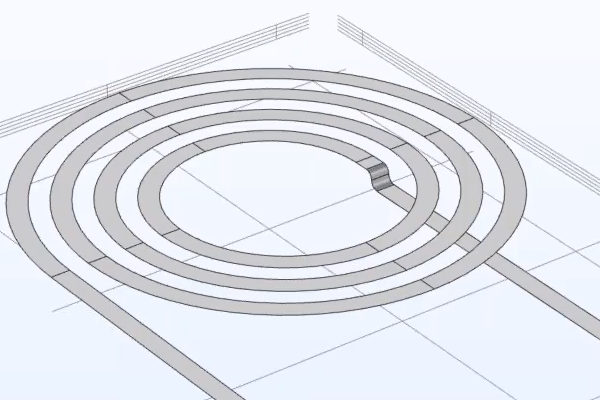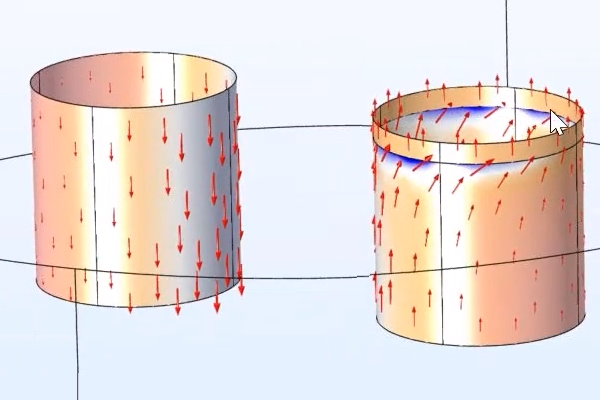Modeling Electromagnetic Coils
This 20-part course is an introduction to modeling electromagnetic coils using the COMSOL Multiphysics® simulation software and the add-on AC/DC Module. In this course, you will be guided through the entire process of building coil models from start to finish. We begin by working in the 2D axisymmetric space and, as the course progresses, we expand our coil model by utilizing different modeling techniques; using specialized physics features; adding physics; modeling different devices and applications; and finally, building coil models in the 3D spatial dimension.
An overview of the course materials and topics covered are outlined as follows:
Getting Started with Modeling EM Coils
Part 1: Introduction to Modeling Coils
- Modeling a single conductor coil under DC operating conditions
- Truncating the modeling domain
- Refining the mesh
Part 2: Strategies for Modeling Electromagnetic Coils
- Modeling a single-turn coil at varying excitation frequencies
- Adjusting the mesh to account for the skin depth
- Extracting impedance and losses
- How and why to use impedance boundary conditions when the skin depth is small
Part 3: Modeling a Coil Connected to an Electric Circuit
- Modeling a single-turn pickup coil that interacts with a transmit coil
- Computing induced currents and voltages under different conditions
- Connecting a coil to an external circuit model
Part 4: Modeling a Multiturn Coil
- Coils with several turns and different winding patterns
- Modeling coils up to and around the first resonant frequency
- Modeling coils with many turns and flat coils
Part 5: Modeling Coils and Electric Circuits Using the Magnetic Fields Interface
- Reduced or background field formulation
- Boundary conditions for modeling thin-walled structures
- Periodic structures
- Modeling of moving domains
Electromagnetic Heating in Coils
Part 6: Introduction to Modeling Inductive Heating in Coils
- Setting up an inductive heating problem
- Using the various solver types to model steady-state and transient cases
- Incorporating temperature-dependent material properties
Part 7: Functionality for Modeling Inductive Heating in Coils
- Improving modeling accuracy via mesh and tolerance refinement
- Using the Events interface to capture instantaneous changes in loads and operating frequencies
- Solving at several different frequencies
Part 8: Modeling Radiative Heating in Coils
- Thermal modeling in more detail
- Modeling radiation and view factors
- Incorporating multiple spectral bands when parts are heating up significantly
Part 9: Modeling Convection and Thermal Damage in Coils
- Multiple approaches for modeling of convection in the surrounding air
- History tracking
- Tracking of damage
Part 10: Modeling the Heating of Moving Parts in Coils
- Several different approaches for modeling parts that are moving relative to the coil
Forces, Motion, and Nonlinearities in Coil Modeling
Part 11: Introduction to Modeling Electromagnetic Forces in Coils
- Modeling forces between coils
- Issues of geometry, meshing, and accuracy
- Modeling magnets
Part 12: Modeling Induced Currents from Moving a Magnet Through a Coil
- Considering the small and large motion of a magnet within a coil, and how this time-varying change in the magnetic field induces currents in the coil
Part 13: Modeling a Solenoid Actuator
- Coupling the computed forces to the small and large deformation of a solenoid plunger via moving domains
Part 14: Modeling a Nonlinear Inductor
- Modeling materials that have a nonlinear B-H curve, and how these will introduce higher-order harmonics into a device such as a transformer
- Extracting cycle-averaged data
Part 15: Optimizing a Coil to Achieve a Desired B-Field
- Using the Optimization Module for optimizing the fields within a coil
- Adjusting current
- Adjusting coil position via the Moving Mesh functionality
3D Coil Modeling
Part 16: Introduction to Building 3D Coil Models
- Building a 3D coil model from scratch, using both the Magnetic Fields and Magnetic and Electric Fields interfaces
Part 17: Exciting 3D Electromagnetic Coil Structures
- Special features for modeling of multiturn coils, thin pancake coils, and tightly-packed coils
- Estimating coil capacitance
- Correct interpretation of boundary conditions as current return paths, electric insulators, or symmetry conditions
Part 18: Using Infinite Elements to Terminate Domains for 3D Coil Models
- Using Infinite Elements for modeling domain truncation
- Built-in coil modeling options
- Using edges to excite coils or compute intercepted flux
Part 19: Modeling 3D Electromagnetic Coils in the Frequency Domain
- Delineating the three modeling regimes, the low-, mid-, and high-frequency regimes, and how to address them via the Magnetic Fields and Magnetic and Electric Fields interfaces
- Issues of meshing and solver convergence
Part 20: Modeling Resonance and Coupling Between 3D Electromagnetic Coils
- Modeling resonant frequency of the coil
- Computing the coupling between coils in 3D
- Summary of the various modeling approaches
Upon completion of this course, you will know how to properly set up, build, and compute both 2D axisymmetric and 3D models of electromagnetic coils. In doing so, you will be knowledgeable in the foundations and key aspects of building such models. You will also be knowledgeable in modeling different types of multiphysics problems for coils as well as the different features and functionality in the software that you can use to model and solve these problems.
Submit feedback about this page or contact support here.




